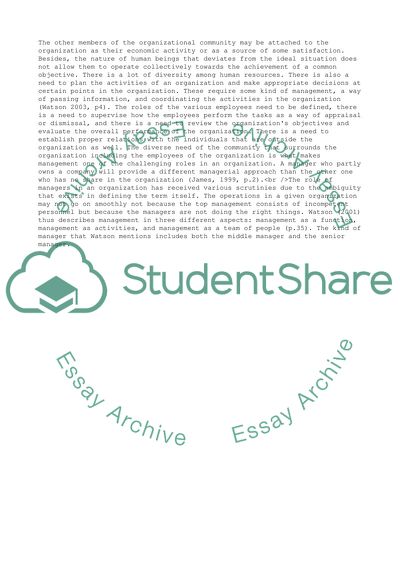Cite this document
(Image of Managers Assignment Example | Topics and Well Written Essays - 1500 words - 1, n.d.)
Image of Managers Assignment Example | Topics and Well Written Essays - 1500 words - 1. https://studentshare.org/management/1576141-discuss-the-image-of-managers-as-rational-and-analytical-planners-decision-makers-and-issuers-of-commands-does-not-stand-up-to-scrutiny-when-researchers-examine-what-managers-actually-do
Image of Managers Assignment Example | Topics and Well Written Essays - 1500 words - 1. https://studentshare.org/management/1576141-discuss-the-image-of-managers-as-rational-and-analytical-planners-decision-makers-and-issuers-of-commands-does-not-stand-up-to-scrutiny-when-researchers-examine-what-managers-actually-do
(Image of Managers Assignment Example | Topics and Well Written Essays - 1500 Words - 1)
Image of Managers Assignment Example | Topics and Well Written Essays - 1500 Words - 1. https://studentshare.org/management/1576141-discuss-the-image-of-managers-as-rational-and-analytical-planners-decision-makers-and-issuers-of-commands-does-not-stand-up-to-scrutiny-when-researchers-examine-what-managers-actually-do.
Image of Managers Assignment Example | Topics and Well Written Essays - 1500 Words - 1. https://studentshare.org/management/1576141-discuss-the-image-of-managers-as-rational-and-analytical-planners-decision-makers-and-issuers-of-commands-does-not-stand-up-to-scrutiny-when-researchers-examine-what-managers-actually-do.
“Image of Managers Assignment Example | Topics and Well Written Essays - 1500 Words - 1”. https://studentshare.org/management/1576141-discuss-the-image-of-managers-as-rational-and-analytical-planners-decision-makers-and-issuers-of-commands-does-not-stand-up-to-scrutiny-when-researchers-examine-what-managers-actually-do.


